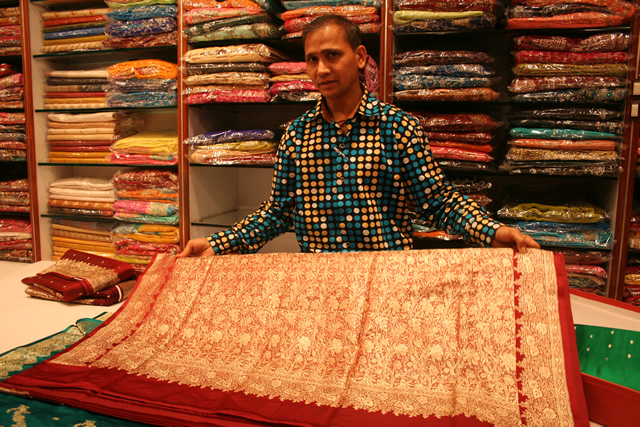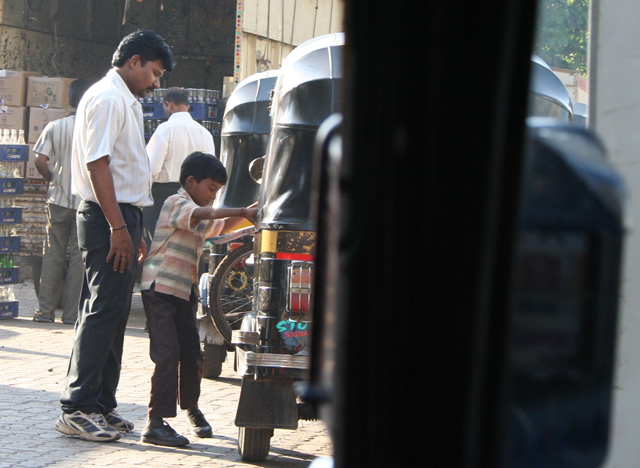I have written before about shopping in Delhi; here I’ll add some more details and tips, organized by location. It’s a good idea to plan your shopping days geographically, as Delhi is very spread out and traffic is horrendous
– it can take over an hour to get from one place to another, worse during evening rush hour, which begins around 3:30 and ends at 9 pm!
Connaught Place
The multiple concentric circles of Connaught Place, in the heart of New Delhi, are going increasingly upscale (at least in parts), perhaps in response to competition from all the shiny new malls further out. There are shops for Levi’s and Lee’s jeans, Van Heusen and other American brands, and even some Italian mid-level fashion brands. At the moment, it’s still possible to buy some very nice clothing at lower prices than you’d find in Europe or the US – though it’s also possible to spend just as much! Depending on the relative values of the rupee and the dollar, this advantage is probably destined to disappear.
Connaught Place can be annoying, however. You can’t walk a yard without being accosted by touts: “Come look my shop”. For some reason the Kashmiri shop owners are the most aggressive; they manage to completely turn me off the mere idea of buying anything Kashmiri, no matter how lovely.
(A TV ad exploits the annoyance factor of many Indian shopkeepers to suggest that you shop on eBay instead!)
Near Connaught Place you will also find the Central Cottage Industries Emporium, and the long row of state emporiums, which I observed in passing seem to have been upgraded in the last few years, but I didn’t get to them this trip.
Greater Kailash N-Block
Full Circle Bookstore: A nice selection of coffee-table and other books on everything Indian, plus music, DVDs, and a nice coffee shop on the top floor.
Fabindia: Shops on both sides of the square. Hand-woven, printed, etc. cottons and silks for home and wear. Fabindia also now has an interesting line of organic cosmetics and foods, including spices, grains, jams, chutneys, etc.
Episode: Beautiful silver items for the home, including elegant modern Ganesh statuettes.
The Next Shop: Some fascinating home decor items, most of which, unfortunately, are too heavy or too fragile for me to carry home in a suitcase. But here’s where I first discovered the range of incredibly designed stainless steel and porcelain dinner and serving ware from Magppie:
“This Indian enterprise is an offshoot of a 30 year old family run business of rolling stainless steel.” It’s a fascinating synthesis: the design team, at least as presented on their website, is entirely foreign, but many of the products reflect Indian sensibilities as well as Indian uses and traditions. Beautiful stuff!
We later found an entire Magppie store at a mall in Gurgaon. If only they offered international shipping…
Khan Market
I only knew Khan Market for Anokhi, the home of fine hand-printed cloth items. Anokhi has now split into two at that site, one on each corner of the block for home furnishings and clothing.
Khan Market has some other interesting shops, including a Biotique, which I noticed because there was an autographed photo of Johnny Depp in the window thanking them for the almond kajal that he wore in “Pirates of the Caribbean.” So I went in and bought some, and it is indeed very nice kajal.
Gurgaon
This suburb which used to be a village is home to many multinationals as well as bedroom community for the city. It now boasts a long row of shopping malls, some specialized in housewares or clothing, others a bit of a mix. As you can see in the photo above, many of the brands are familiar!
more shopping in Delhi
share your shopping tips for Delhi






























